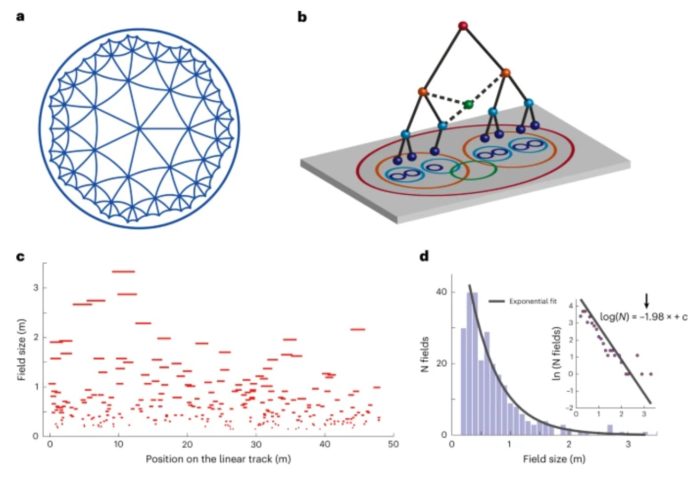Jan 06 2023
Brain Uses Hyperbolic Geometry
 The mammalian brain is an amazing information processor. Millions of years of evolutionary tinkering has produced network structures that are fast, efficient, and capable of extreme complexity. Neuroscientists are trying to understand that structure as much as possible, which is understandably complicated. But progress is steady.
The mammalian brain is an amazing information processor. Millions of years of evolutionary tinkering has produced network structures that are fast, efficient, and capable of extreme complexity. Neuroscientists are trying to understand that structure as much as possible, which is understandably complicated. But progress is steady.
A recent study illustrates how complex this research can get. The researchers were looking at the geometry of neuron activation in the part of the brain that remembers spatial information – the CA1 region of the hippocampus. This is the part of the brain that has place neurons – those that are activated by being in a specific location. They wanted to know how networks of overlapping place neurons grow as rats explore their environment. What they found was not surprising given prior research, but is extremely interesting.
Psychologically we tend to have a linear bias in how we think of information. This extends to distances as well. It seems that we don’t deal easily (at least not intuitively) with geometric or logarithmic scales. But often information is geometric. When it comes to the brain, information and physical space are related because neural information is stored in the physical connection of neurons to each other. This allows neuroscientists to look at how brain networks “map” physically to their function.
In the present study the neuroscientists looked at the activity in place neurons as rats explored their environment. They found that rats had to spend a minimum amount of time in a location before a place neuron would become “assigned” to that location (become activated by that location). As rats spent more time in a location, gathering more information, the number of place neurons increased. However, this increase was not linear, it was hyperbolic. Hyperbolic refers to negatively curved space, like an hourglass with the starting point at the center.
Another way to visualize this is like a decision tree, with each level in the hierarchy of decision leading to multiple choices. Therefore the number of choices does not increase with each level from 2 to 3 to 4 (linearly), but from 2 to 4 to 8 (geometrically). Similarly, the number of new place neurons recruited into the expanding network is determined by the size of the edge of the expanding space, which increases geometrically. This may be a general, or at least common, phenomenon in the brain as a similar geometry was found when studying how rats encode olfactory information – a geometric expansion of the network mapping to the odor “space”.
What this means is that mammalian brains encode information, at least in some functions, in a way that naturally allows for a geometric expansion of information, as networks expand in physical size. And in this case the shape of that expansion is negatively curved and therefore hyperbolic. With respect to location information, the amount of stored information expanded geometrically with more time spent. In fact, even if the rats just moved a bit more slowly through a location, the size of their expanding network relating to that location was measurably larger.
Just in terms of information theory, this does make sense. In any network, the addition of new nodes that connect to multiple other nodes geometrically increases the number of new connections and possible pathways.
It is also interesting to think about how this underlying function of how we encode place information relates to our subjective experience. For myself, I definitely notice a dramatic difference in how well I can remember locations based upon how much time I have spent there. I have also had the experience of a location “clicking into place” – suddenly, I know exactly where I am while just a moment ago I was lost. Usually this happens when traveling in a moderately familiar place but arriving from a different direction than usual.
Also, my childhood location memories are much more vivid than anything from my adulthood. I can visually walk around the property and through my childhood home in vivid detail – even more easily than the current home I have lived in for the last 20 years. In fact, my childhood home is a more frequent location of remembered dreams than my current home. Psychologists have found this can be true of memories formed between the ages of 5 and 12, perhaps as a result of the fact that our brains are still developing and we are forming our basic identity. Others have speculated that this may be why so many people love the music and other aspects of culture from their youth (and why the movie industry so relentlessly exploits this nostalgia).
But perhaps it is also true that the network tree of place cells that encode my childhood home is just vast, more vast than any similar network I can form as an older adult. And that size increase relates to a geometric increase in information. My brain may just be storing orders of magnitude more information about my childhood home than any other location. It certainly feels that way.






